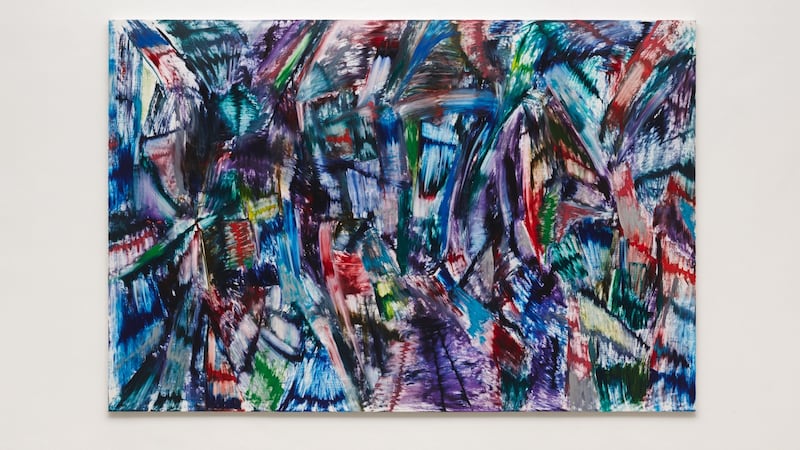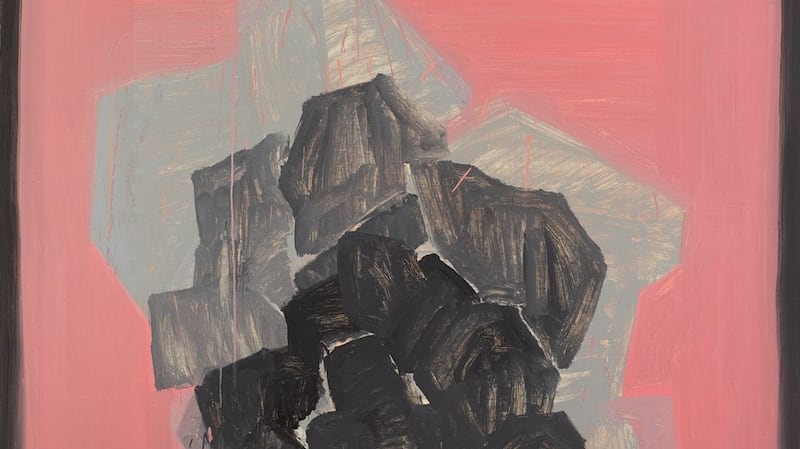Woods – Ed Miliano
Oliver Sears Gallery, Dublin
****


Ed Miliano's Woods shifts intriguingly across three locations. They are the landscape around Fartha, Riverstick, near Kinsale in Cork; Avignon in France; and several landscapes around Tokyo. The common thread is woodland. Miliano is audacious in adopting two distinct lines of approach. Here there is a single division between the European and the Japanese work.
In spring 2014, he worked on a mural in a rebuilt 18th-century cottage at the studio of furniture designer and maker Joseph Walsh; the cottage had been Walsh's grandfather's home. Exploring the surroundings, Miliano began making drawings of the woodland and developed a rhythmic composition for the mural based on the patterns encountered making his way through the trees.
Previously, at the RHA and at Oliver Sears, he has shown a series of 366 small paintings, Diary, which charts his view of his garden through the year. The notion of charting nature through time is elaborated in the overlapping leaves, the alternating diversity of texture and pattern in the mural and in the body of work surrounding it. Without question the Avignon paintings in the gallery recall late Cézanne and the early cubist compositions of Picasso and Braque. It could be that Miliano is referencing Picasso's key painting, Les Demoiselles d'Avignon (which is thought, incidentally, to refer not to Avignon but to a brothel in Barcelona), a milestone in the history of cubism. With its jagged rhythms and flesh hues it is, however, quite a harsh painting, and Miliano's palette of muted earth colours and gently interleaved forms more closely echo the landscapes and still lifes of the earlier painters.
He does not make pastiches of their work; rather he revisits it and explores what can be done with that visual language now. It is mildly surprising that quite a lot can be done. Still, there is a shift of gear when he gets to Japan (he has been based in Tokyo for more than a year). Tokyo is a sprawling, high-rise city but Miliano seeks out glimpses of the classical Japanese garden landscape. There is a stunning view of the interior of the carefully preserved former Kusuo Yasuda residence, built in 1919. Framed by the dark interior, the garden is a serene natural domain. A series of elegant, perfectly judged collage paintings emphasise the role of rigorous design in the formation of "natural" settings. Look closely and you will see that the collaged texts bridge the geographical diversity of the sources. A minor detail, perhaps, but perfectly judged, and indicative of the thoughtfulness and quality of the exhibition overall.
- Until March 10th,oliversearsgallery.com
Ardán – Sinéad Ní Mhaonaigh
Kevin Kavanagh Gallery, Dublin
****
There is a purity of purpose to the way Sinéad Ní Mhaonaigh has adhered to a classical mode of oil painting. Discarding various distractions, including peripheral aspects of style and flourish, she has gradually devised a spare but somehow sensually rich iconography.
The richness might have something to do with the medium. The most alluring and alarming thing about oil paint is its seductive versatility. It can do anything or become anything, visually mimicking appearance, texture, touch, a passing breath of air. Ní Mhaonaigh acknowledges that versatility while containing its infinite subtlety and harnessing its potential to her own ends.
She has long explored relations between performer and audience or observer and observed, and continues that process here. Her platform – ardán – is a stage, from which we see the performer’s view of the audience: a block of barely differentiated individuals, on occasion no more than a disorienting blur.
But what of the audience’s view of the performer? Several paintings offer an amalgam of central forms, nothing too defined or identifiable. Rather than being seen from the stage or platform, they occupy it. They are quite powerful in their vagueness: pictures of celebrities, or candidates, on to which we project our own desires and dreams of identity.
- Until February 27th, kevinkavanaghgallery.ie
Water for the Tribe – Jan Pleitner
Kerlin Gallery, Dublin
****
Jan Pleitner does not shy away from jarring colour clashes. Acid-tinged hues – especially blues, greens and reds – are dragged in intersecting swathes across the surfaces of his canvases. They meet, skirmish, collide and retreat. He piles pigment on and scrapes it away. It never accumulates to any degree. The surface remains tenuous, slippery, uneasy.
He is deeply influenced by science fiction, and takes his show's title from Frank Herbert's novel Dune, although not necessarily David Lynch's film adaptation of it. Unlike the film, there is a jittery, nervous energy to Pleitner's canvases. They set our eyes going and never let them rest. Pleitner has in mind our souped-up world of instantaneous communications. Moving beyond the technology of the web and its various platforms, he tries to envisage the way our brains process information, and information's speed-of-light negotiation of the spaces between people and their devices.
He comes close to Gerhard Richter when he argues that he is not making abstractions as such, but coaxing out implicit, unseen aspects of our familiar world. Rather than being "anti-image" he is trying to unearth unknown or hidden images.
Although at first glance his paintings seem to bristle optically and almost deter vision, give them time and their sizzling energies settle down. Give them time, and perhaps a little space. Certainly, they define and enhance the Kerlin’s main gallery.
- Until March 10th












